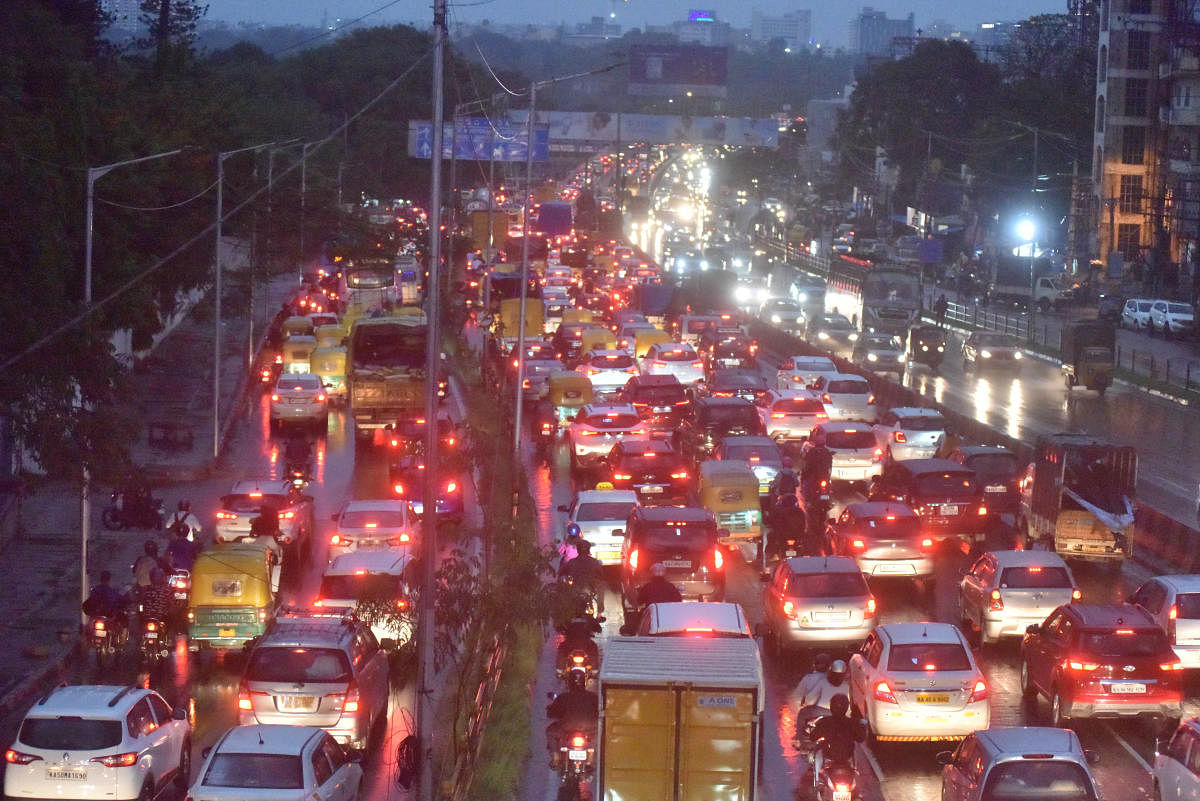
Noise levels are breaching recommended limits at several places in Bengaluru.
The Karnataka State Pollution Control Board monitors noise levels at 10 stations round the clock.
According to the Central Pollution Control Board (CPCB), the permissible noise level in a silent zone is 50 dB during the day and 40 dB at night. In April, the station at RVCE on Mysore Road, considered a silent zone, recorded a staggering 83% increase over the permissible level at night and 38% during the day.
The average noise level at the station in April was 73.3 dB, a significant increase over the 50 dB in April 2021, and 48.7 dB in April 2020.
Nimhans, another silent zone, breached the permissible noise levels by 55.5% at night. A silent zone refers to a noise-sensitive area around hospitals, educational institutions, courts and religious places.
“Many ambulances are passing by, and can greatly add to the noise. And also, there is noise coming in from construction in the area,” a senior board official told Metrolife.
The station at BTM Layout, a residential area with a generous sprinkling of business establishments, breached the ceiling by 38.9% at night. The average noise level at the station in April was 62.5 dB as against the permissible 45 dB.
“The most common causes of noise pollution in the city are motor vehicles and construction. Plus, now that the pandemic restrictions are relaxed, the number of vehicles has tremendously increased. Loudspeakers during events also add to the increased noise levels, as people are now allowed to hold public events,” says the official. Residents across the city have also noticed an increase in noise pollution. “The horns are just too intense, and the RTO is not doing much to keep this in check. Plus, in many areas, construction timings are not followed, which leads to loud noises throughout the night,” says Nitin Seshadri, secretary, Koramangala 3rd Block RWA.
He also believes the board needs to take up the matter of noisy generators in residential areas. “This has been a problem for a long time and adds greatly to the noise problem,” he says. Shakila Anwer, a resident of Okalipuram, says the police should crack down on blaring horns. “The police are so vigilant about sounds from places of worship, but what about roaring engines and horns?” she says.
Awareness drives
The Pollution Control Board publishes consolidated data from the 10 noise level monitors on its website every month. “Apart from this, we also have boards set up at places metro stations which display the live noise level in the area. The objective is to make people aware of the level of noise pollution,” says a senior official from KSPCB. If the monitoring stations show a staggering increase, the board informs the jurisdictional police.
Noise level
monitoring locations
BTM Layout, Domlur, S G Halli, Church Street, Kadubeesanahalli, Yeshwanthpur, Whitefield, Peenya, Indira Gandhi Institute of Child Health (near Nimhans), and R V College of Engineering.
Doc’s POV
ENT specialist Santosh Shivaswamy has noticed an increase in cases of noise-induced hearing loss. “One of my theories is that since most people were working from home for two years and mostly constantly using earphones, they are now exposed to high noise levels on the roads,” he tells Metrolife.
Tips
Have the windows up while driving.
Wear a full-face helmet.
Use cotton to plug your ears while travelling.
Avoid constant exposure to loud noises.
Check it out
The Karnataka State Pollution Control Board presents live data from its monitoring stations on its official app.
Cops speak
The traffic police in the city have been doing their best to spread awareness about noise pollution, says Ravikanthe Gowda, joint commissioner of police, Bengaluru. “We have a ‘No Honk’ campaign currently going on. Apart from levying fines for incessant honking, police officers are trained to educate people on the harms of constant honking,” he told Metrolife.
C V Muralidhara, additional chief traffic warden, says traffic wardens have been following the same protocol. “Wardens are stationed at intersections and signals and we do our best to educate and advise the public, especially cab drivers,” he says. In addition to the blaring horns, he believes there also needs to be a crackdown on “defective silencers”, “These are another big cause for sound pollution,” he adds.